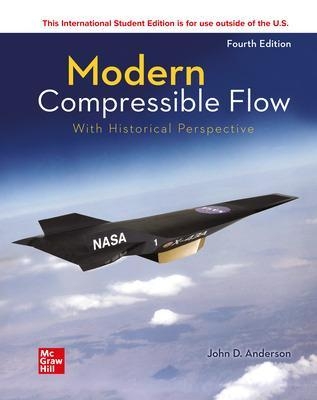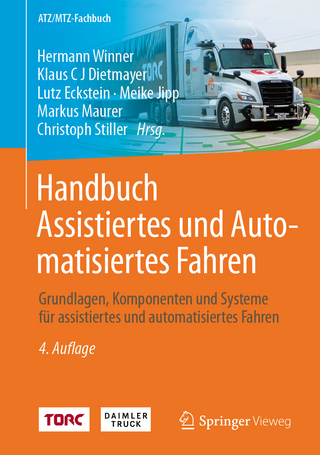
ISE Modern Compressible Flow: With Historical Perspective
McGraw-Hill Education (Verlag)
978-1-260-57082-3 (ISBN)
John D. Anderson, Jr., was born in Lancaster, Pennsylvania, on October 1, 1937. He attended the University of Florida, graduating in 1959 with high honors and a Bachelor of Aeronautical Engineering Degree. From 1959 to 1962, he was a Lieutenant and Task Scientist at the Aerospace Research Laboratory at Wright-Patterson Air Force Base. From 1962 to 1966, he attended the Ohio State University under the National Science Foundation and NASA Fellowships, graduating with a PhD in Aeronautical and Astronautical Engineering. In 1966, he joined the U.S. Naval Ordnance Laboratory as Chief of the Hypersonics Group. In 1973, he became Chairman of the Department of Aerospace Engineering at the University of Maryland, and since 1980 has been Professor of Aerospace Engineering at the University of Maryland. In 1982, he was designated a Distinguished Scholar/Teacher by the University. During 1986–1987, while on sabbatical from the University, Dr. Anderson occupied the Charles Lindbergh Chair at the National Air and Space Museum of the Smithsonian Institution. He continued with the Air and Space Museum one day each week as their Special Assistant for Aerodynamics, doing research and writing on the History of Aerodynamics. In addition to his position as Professor of Aerospace Engineering, in 1993, he was made a full faculty member of the Committee for the History and Philosophy of Science and in 1996 an affiliate member of the History Department at the University of Maryland. In 1996, he became the Glenn L. Martin Distinguished Professor for Education in Aerospace Engineering. In 1999, he retired from the University of Maryland and was appointed Professor Emeritus. He is currently the Curator for Aerodynamics at the National Air and Space Museum, Smithsonian Institution.
1 Compressible Flow - Some History and Introductory Thoughts 2 Integral Forms of the Conservation Equations for Inviscid Flows 3 One-Dimensional Flow 4 Oblique Shock and Expansion Waves 5 Quasi-One-Dimensional Flow 6 Differential Conservation Equations for Inviscid Flows 7 Unsteady Wave Motion 8 General Conservation Equations Revisited: Velocity Potential Equation 9 Linearized Flow 10 Conical Flow 11 Numerical Techniques for Steady Supersonic Flow 12 The Time-Marching Technique: With Application to Supersonic Blunt Bodies and Nozzles 13 Three-Dimensional Flow 14 Transonic Flow 15 Hypersonic Flow 16 Properties of High-Temperature Gases 17 High-Temperature Flows: Basic Examples Appendix A Appendix B An Illustration and Exercise of Computational Fluid DynamicsAppendix C Oblique Shock Properties: y = 1.4
| Erscheinungsdatum | 14.03.2020 |
|---|---|
| Zusatzinfo | 360 Illustrations |
| Verlagsort | OH |
| Sprache | englisch |
| Maße | 185 x 231 mm |
| Gewicht | 1166 g |
| Themenwelt | Technik ► Fahrzeugbau / Schiffbau |
| ISBN-10 | 1-260-57082-7 / 1260570827 |
| ISBN-13 | 978-1-260-57082-3 / 9781260570823 |
| Zustand | Neuware |
| Haben Sie eine Frage zum Produkt? |
aus dem Bereich


